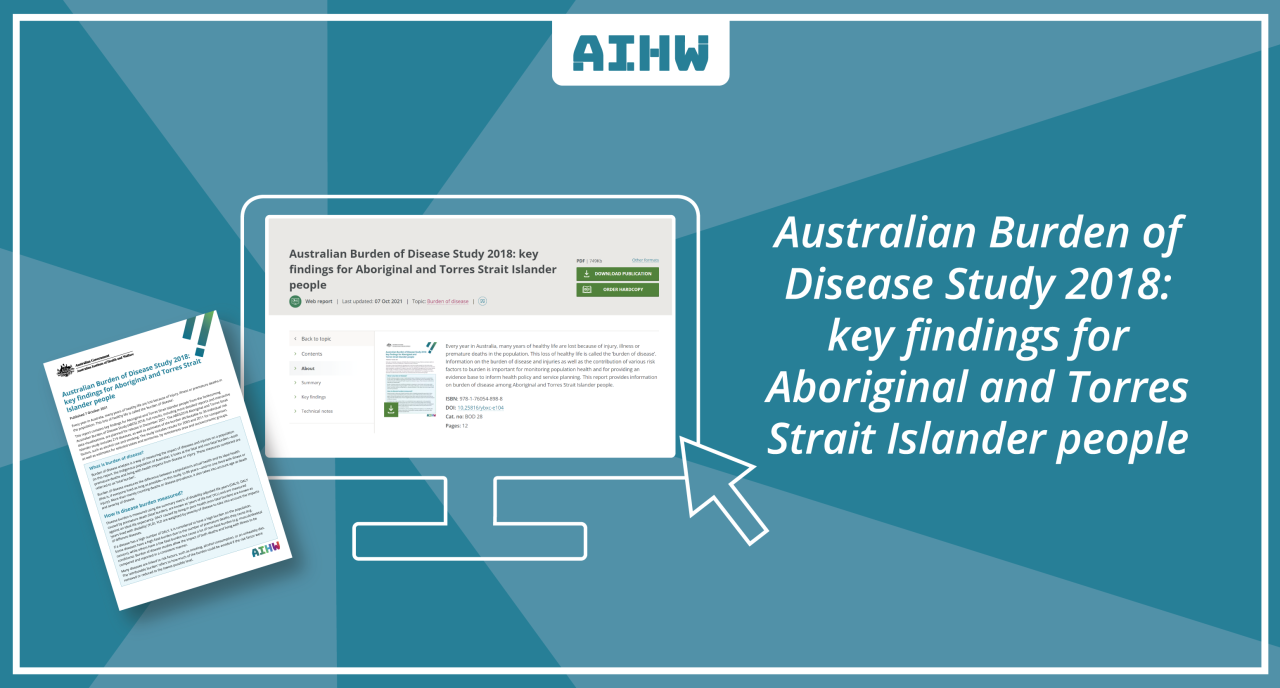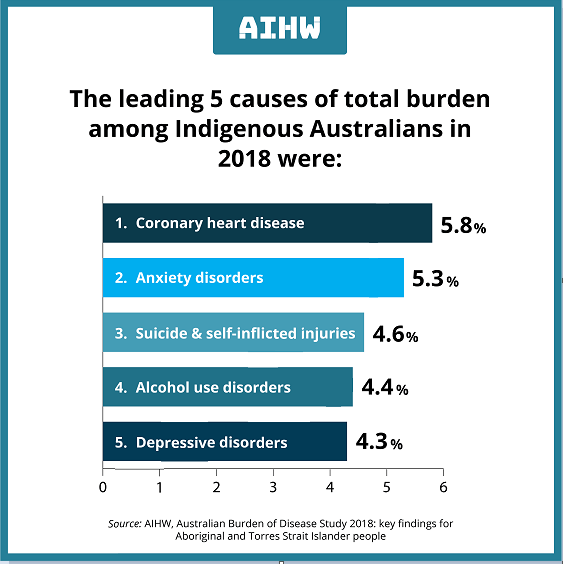AIHW releases Australian Burden of Disease Study 2018 – key findings for Aboriginal and Torres Strai
The article was originally posted on LinkedIn by Fadwa Al-Yaman, Group Head, Indigenous group, AIHW.

I’m proud to see our report Australian Burden of Disease Study (ABDS) 2018: Key findings for Aboriginal and Torres Strait Islander people released today. This complements last month’s ABDS 2018: key findings report which showed the overall health of Australians continues to improve.
While Aboriginal and Torres Strait Islander people continue to experience higher rates of ‘disease burden’ than the Australian population as a whole, today’s report shows significant improvements in the burden of disease experienced by Indigenous Australians, with the gap narrowing.
Every year in Australia, millions of years of heathy life are lost because of injury, illness or premature deaths. This loss of healthy life is what we call ‘burden of disease’. Burden of disease analysis measures these impacts by looking at the number of years living with an illness or injury (the non-fatal burden) or lost through dying prematurely (the fatal burden).
The findings of the report show over the 15 years from 2003 to 2018, after adjusting for population growth and ageing, there was a 27% decline in fatal burden, with rates of non-fatal burden remaining stable. This meant that the total burden for Indigenous Australians decreased by 15%.
In 2018, the non-fatal burden accounted for 53% of total burden and fatal burden accounted for 47%. Almost half (49%) of the disease burden among could have been prevented by avoiding modifiable risk factors such as smoking and an unhealthy diet.

Chronic diseases and injury caused 63% of the total burden with mental and substance use disorder being the leading cause (23%), followed by injuries including suicide (12%) cardiovascular diseases (10%), cancers (9.9%) and Musculoskeletal diseases (8%). The study includes estimates for Aboriginal and Torres Strait Islander people by age and sex for 17 disease groups, 203 diseases and injuries and for selected population groups (state/territory, remoteness areas, and socioeconomic group). In addition, the decline in the gap in the disease burden between Indigenous and non-Indigenous Australians between 2003 and 2018 is also estimated.
Today’s report is extremely important for monitoring the health of Indigenous Australians and providing a growing evidence base to inform health policy and service planning to support better outcomes.
Keep an eye out in late 2021, for full results and more detailed findings from the ABDS 2018.


